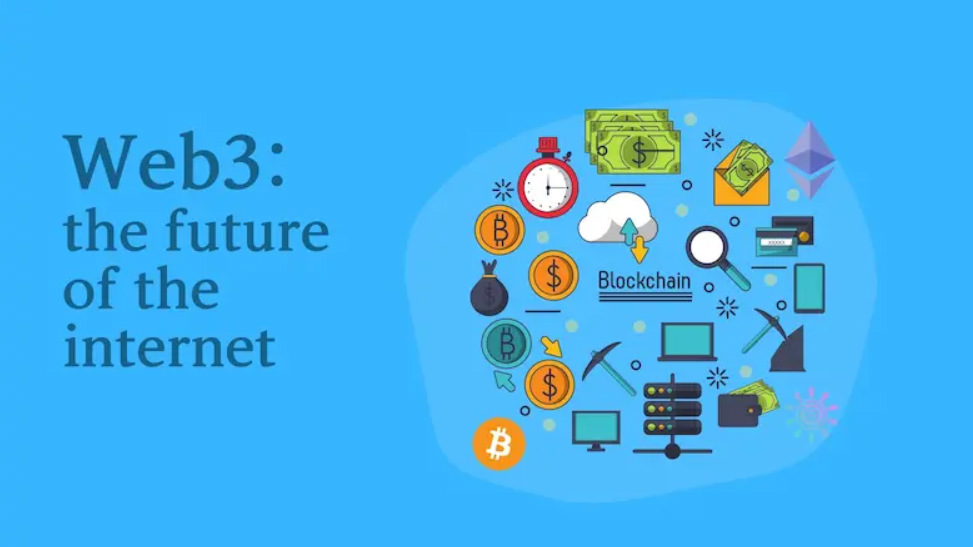The Internet has two phases so far: Web 1.0 and Web 2.0.
The next stage is naturally Web 3.0 (Web3 for short). This article talks about my preliminary understanding of Web3 and what it is.
1. Historical review In the Web 1.0 stage, users are pure content consumers. The content is provided by the website. You can see what the website allows you to watch. A typical example is a news portal.
In the Web 2.0 stage, users are content producers, and a website is just a platform to provide users with services. Typical Web 2.0 platforms include Wikipedia, Douyin, WeChat, and so on.
Second, the characteristics of Web3 Many characteristics of Web3 are still unclear, but many foreign articles believe that it is related to the blockchain.
I have been unable to figure out how to get this conclusion. I read an article recently and suddenly want to understand.
Web 1.0 means users read the Internet, Web 2.0 means users write to the Internet, and Web3 means users live on the Internet.
Entertainment, work, study, consumption, and communication all happen online. The website not only provides services, but is also a living space, and part of people's lives can be completed online.
Study on educational websites, have meetings on conference websites, make friends on social networking sites, and have fun on gaming websites. All websites together constitute an all-encompassing online world.
3. If the life functions of all websites in the virtual world can be connected together, allowing users to seamlessly move from one scene to another, it will constitute a virtual world. This is probably what the recently popular metaverse looks like.
At that stage, users no longer visit the website, but enter the virtual world and live a virtual online life.
Four. Web3 is a distributed virtual world. Obviously, it cannot be monopolized by one or several giants, otherwise we will rely on these giants and have to abide by the rules it sets. When your life is in the virtual world, one day the giant suddenly decides to close your account, won't your virtual life come to an abrupt end!
This is why many people propose that Web3 should be distributed. This has two meanings: (1) It is not centralized, so no single company can control it; (2) Any kind of service has multiple providers, connected through a distributed protocol, and users can be extremely small Cost, transferred from one provider to another service provider.
5. The role of blockchain If Web3 is determined to be distributed, then blockchain is simply a natural infrastructure. Because the blockchain is an implementation of a distributed database, it is distributed in itself, and once the information is on the chain, it cannot be modified.
This solves the core problem of Web3: data exchange between different websites. Different websites can freely read and write the data of the same user, and these data can be trusted, so as to ensure that users entering another website is like entering a different area of the same world.
Once Web3 is built on the blockchain, according to the design of the blockchain, users need to have a digital wallet, which is your ID card and bank account in the virtual world. Your identity, property, and consumption are all identified through this digital wallet. The website uses the ID of the digital wallet to identify who you are.
On the other hand, with the digital wallet, banking and finance have become virtual, which makes the virtual world more like the real world.
6. The digital asset blockchain allows arbitrary data to be written, so it is inevitable that all digital records of our virtual life can be placed on the blockchain.
If each virtual item has its own number and records them on the blockchain, then their owner can be determined (that is, connected to the digital wallet).
For example, each digital toothbrush in the virtual world can have a unique number on the blockchain, which will not be confused with other toothbrushes, and the owner of each toothbrush can be determined by linking to the digital wallet.
I don’t know why I put the toothbrush on the blockchain. I just give an example to show that the blockchain can do this.
We can even trade this toothbrush, register it in another digital wallet, and let its owner become someone else. This is how the popular NFT is done, except that it is not a toothbrush registered on the blockchain, but a digital collectible.
Entrepreneur Chris Dixon publicly said not long ago: "Web3 is ownership", that's what it means.
If everyone, all items, and all transactions are registered on the blockchain, then the ways to play Web3 based on it are simply endless, which is unimaginable now. The possibilities of the virtual world are 100 times and 1000 times more than the real world.
At present, it is only the initial stage of Web3, the infrastructure has not yet been completed, and the gameplay is still being explored, but the progress is fast. Countless innovations and opportunities should be born in this field, which deserve close attention.
互联网迄今有两个阶段:Web 1.0 和 Web 2.0。
下一个阶段自然就是 Web 3.0(简称 Web3)。本文谈谈我对 Web3 的一些初步理解,它到底是什么。

一、历史回顾
Web 1.0 阶段,用户是单纯的内容消费者,内容由网站提供,网站让你看什么,你就看什么,典型例子就是新闻门户网站。

Web 2.0 阶段,用户是内容的生产者,网站只是一个向用户提供服务的平台,典型的 Web 2.0 平台有维基百科、抖音、微信等等。

二、Web3 的特征
Web3 的很多特征还不明确,但是国外很多文章认为,它跟区块链有关。

我一直想不通,这个论断是怎么得到的。最近读到一篇文章,突然想明白了。
Web 1.0 是用户读取互联网,Web 2.0 是用户写入互联网,Web3 是用户生活在互联网。
娱乐、工作、学习、消费、交际,都在网上发生。网站不仅提供服务,还是一个生活空间,人们的一部分生活可以在网上完成。
在教育网站学习,在会议网站开会,在社交网站交友,在游戏网站玩乐。所有网站共同构成了一个无所不包的网络世界。
三、虚拟世界
所有网站的生活功能,如果能够连在一起,让用户无缝地从一个场景进入另一个场景,那就构成了一个虚拟世界。这大概就是最近很热门的元宇宙(metaverse)的样子。
到了那个阶段,用户不再是访问网站,而是进入虚拟世界,过着虚拟的线上生活。
四、Web3 是分布式的
这样的虚拟世界,显然不能被一家或几家巨头垄断,否则我们就会依赖这些巨头,不得不遵守它制定的规则。当你的生活都在虚拟世界里面,某一天巨头突然决定关闭你的账号,你的虚拟人生岂不嘎然而止了!
这就是很多人提出 Web3 应该是分布式的原因。这有两层含义:
(1)它不是集中式的,就没有单一的公司可以控制它;
(2)任何一种服务都有多家提供商,通过分布式协议连起来,用户可以极小的成本,从一个提供商转移到另一个服务商。
五、区块链的作用
如果 Web3 确定是分布式的,那么区块链简直就是天然的基础设施。因为区块链是分布式数据库的一种实现,本身就是分布式的,而且信息一旦上链,就无法修改
这解决了 Web3 的核心问题:不同网站的数据交换。 不同网站都可以自由读写同一个用户的数据,并且这些数据是可以信赖的,从而保证用户进入另一个网站,就好像进入同一个世界的不同地区。
- 内容分页 1 2
